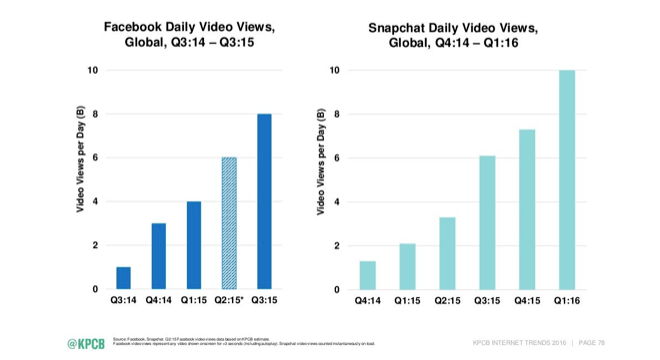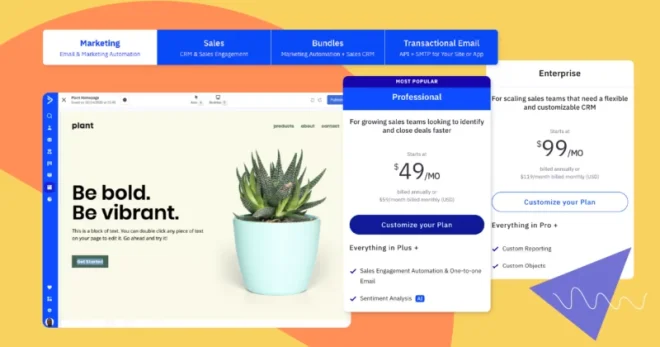Whether we’re consuming entire series on Netflix, watching skits on YouTube, following Twitch streams, or engaging with tutorial courses via gated teaching sites, our lives are dominated by streaming digital video. It’s supremely convenient and immediately engaging in ways that text or static visual content can’t rival — so there’s no need to make a case to convince consumers.
What about convincing businesses, though? They’re usually slower to adapt to technological shifts than individuals, and the sluggishness increases as they grow. Imagine a multinational conglomerate trying to fundamentally overhaul its marketing strategy: simply getting initial approval from everyone at the managerial level could easily take many weeks.
This presents a difficult situation. On one hand, there’s the immense value of online video, almost regardless of the purpose you want it to serve. On the other, there’s the sheer inertia of most companies that holds them back from trying new things, making it hard to proceed. If you’re in that corporate quagmire, what you need is a compelling business case that lays out why online video is an essential part of a well-rounded strategy.
In this article, I’m going to set out the core justifications for embracing video as a business tool. Let’s get started!
Make your sections smartable and let go of mundane manual tasks with Smart Sections! An easy way to manage bulk changes.
It’s not that expensive to produce
One of the most common objections to using online video for business is the cost of doing it: it’s too expensive. It seems that plenty of managerial types are convinced that they’d need to buy (or rent) cinema-style camera equipment to create and produce worthwhile video — and that isn’t even factoring in the cost of the sets and costumes.
In reality, this supposition is completely off the mark, because it really doesn’t cost that much at all to film and edit high-quality video. The key to this is the fast development of smartphone technology because it means that the average person now carries around a camera capable of recording high-definition video that’s perfectly acceptable for viewing on YouTube.
Assuming you have such a device and you’re willing to learn to use editing tools (you can even edit video directly from your phone), you have everything you need to start. Lighting can be managed with a bright light and a white backdrop, and costumes and sets are certainly not required for most business-themed videos!
It can be driven by existing content
Another obstacle to mainstream business acceptance is the fear that the creative process of making video is prohibitively arduous. Scripting the content (where necessary), planning how everything in the wider content strategy will fit together… when you already have a team struggling to meet the quota for blog posts and social media updates, the idea of adding to that burden with a new focus on video doesn’t seem overly appealing.
But here’s the thing: your video content doesn’t need to complement your other content, because it doesn’t need to be distinct from it. Instead, you can use pieces of existing content as the cores of your videos, making each one an adaptation and expansion of something you’ve already researched and polished.
Does this still require work, and a lot of it? Yes, that’s undeniable. If you have a 500-word blog post that you want to turn into a 60-second video, that’s something you need to work through carefully until you’ve determined exactly what the best fit is. You also need to do things like source visuals to illustrate points and record voiceovers — but since you can establish mutual linking between your videos and the original pieces that inspired them, you can benefit quite significantly from a relatively-small addition to your workload.
It’s the most impactful social media tool
Think about the average social media user browsing through their Twitter or Facebook feed. With each person or brand they’re following likely to be posting numerous times each day, it’s a recipe for a torrent of content, with each refresh completely clearing the screen. This leaves the average post struggling mightily to get a useful amount of attention before it’s swept away.
If you’re going to wade into that hyper-competitive world, you should use whatever form of media is most likely to get noticed — and that’s video. Consider that videos can be set to autoplay on social media platforms, creating motion that inevitably gets people looking (using this appeal is sufficiently effective that it’s often considered a psychological trick).

We survived the evolutionary process due (in part) to our excellence at spotting unexpected movement: even if we’re not interested in the offer, a social media video with a bold opening will get us looking. Is that something you really want to pass up and leave to your rivals? If you don’t take advantage, you’ll find it hard to compete with those who do.
It’s key for humanizing your brand
Does your business have an ethical policy? Some kind of statement (or set of statements) about what type of company it is, how it operates, and what its intentions are regarding hot-button topics such as climate change and worker payment? If it doesn’t, then it’s on its way to being an exception, because the pressure on businesses to care about more than profit is growing.
Part of the reason for this is that shoppers don’t need to stick with the same old brands, regardless of how they feel about them. Through ecommerce, and even innovations in hybrid bartering systems, they can source their products in myriad ways — and more often than ever before, they’ll choose to pay a little more to buy from companies they actually respect.
So how do you prove to your target shoppers that you hold the values they prize so highly? Well, there are various options. You can simply list your core values on your website, but this typically comes across as contrived and disingenuous. You can partner with other brands they like, and this can work well, but that association won’t inevitably make them consider you deserving of their time and custom.
Alternatively, you can produce some videos that let you take advantage of those emotional benefits we touched upon earlier. The classic example is the talking-head interview or presentation: just one person from your company talking to a camera about the business, whether prompted by questions or simply talking, can really make a difference if they come across as sincere. If no one in your company genuinely cares about your corporate values, people will notice — but if you do, then getting in front of the camera will make it clear.
These videos are particularly great on landing pages, incidentally, because they give you enough time to fully explain what’s on offer. If you have any such pages set up and you’re in the process of optimizing them to convert, try building them around your videos.
- Create a series about someone using your product. There’s a simple formula behind promoting products: detail the problem, introduce the solution, and show the success. This split can be used very well to tell a story through video. You start with someone struggling with the primary issue, then have them discover your product and end up satisfied with the resolution. If you make the main character relatable, it’ll do a lot to make your product look great.
- Feature happy real-world users in interviews. If you’ve already made some customers happy with your business, you should take advantage of that legitimate goodwill by capturing it on video (if they’ll agree to take part, of course). Ask your most loyal customers if you can feature them in video case studies, and offer them small incentives if you need to.
- Detail how your business operates on a daily basis. If you’re not sure what story to tell, why not tell the one that’s unfolding with each passing day? The development of your business will probably be interesting to people, and your trials and tribulations will make them more likely to support you because they’ll empathize with you.
- Document your most notable charitable efforts. It’s very common for businesses that are committed to things other than profit to put some time into charitable efforts, and while the primary purpose should be to help others, there’s no harm in also making the most of it for PR: the more the business thrives, the more good it can do. By taking footage of your charity work and carefully documenting it, you can work to drive donations and improve your company’s image.
Those are just four options (the list is far from exhaustive), but the overall point should be clear. Stories help us connect with people (or organizations), understand them, and root for them — and the more people connect with your business, the better your performance will become.
Summary
If you’re the one making the business decisions, then you should think carefully about everything we’ve looked at here. Online video is incredibly popular, grabs (and holds) attention, and has the power to tell stories, convey emotions, and show the humanity behind brands.
If you’re not the one making the decisions, then you have two options: link that person to this piece, or take on board all the main points and use that as inspiration to sway them with a powerful case of your own.
Either way, the result should be a new determination to use online video content to boost your business — anything else would be a massive disappointment (and implicitly an invitation to be outperformed by your competitors).








